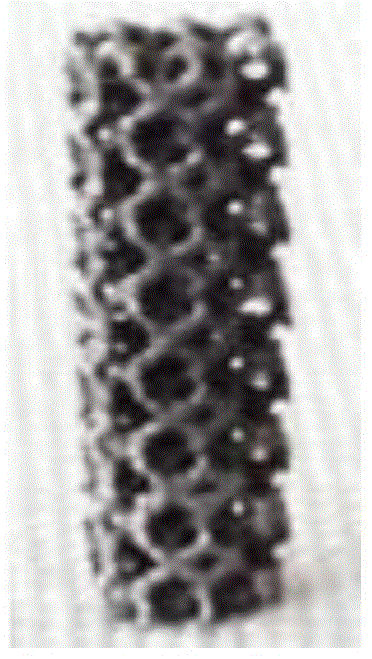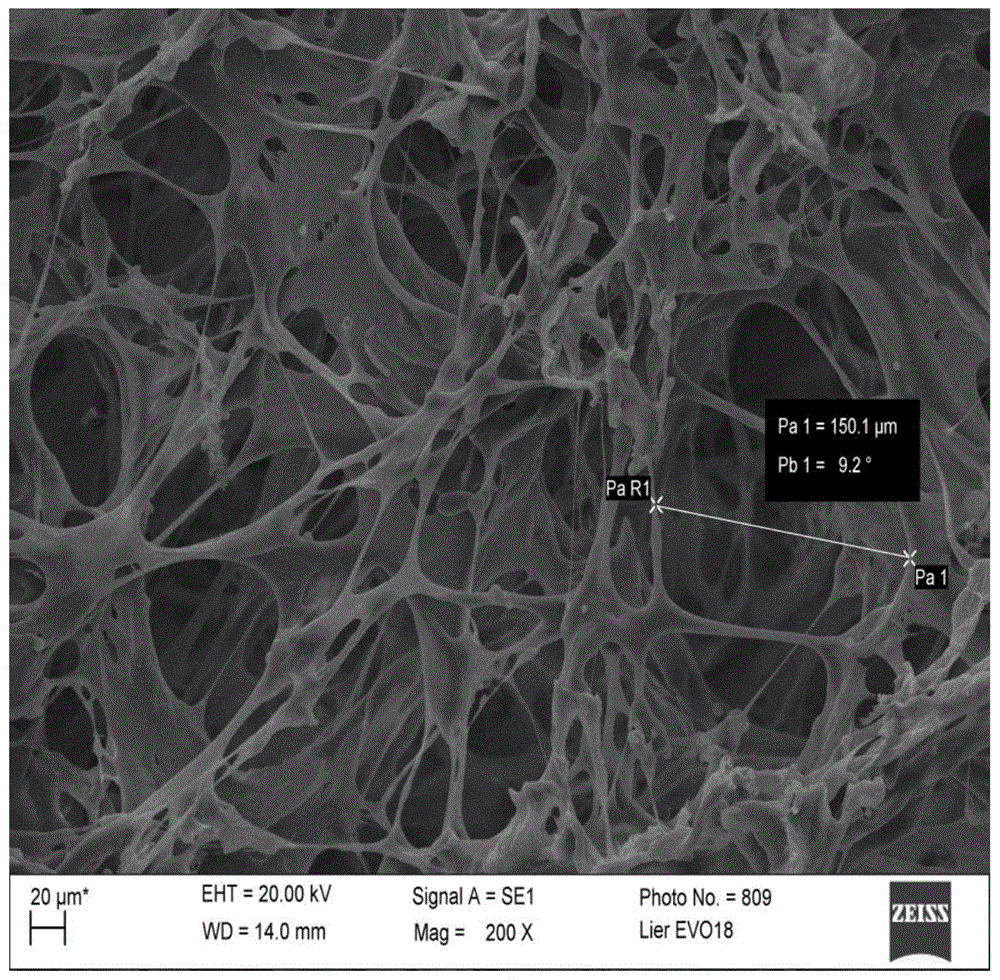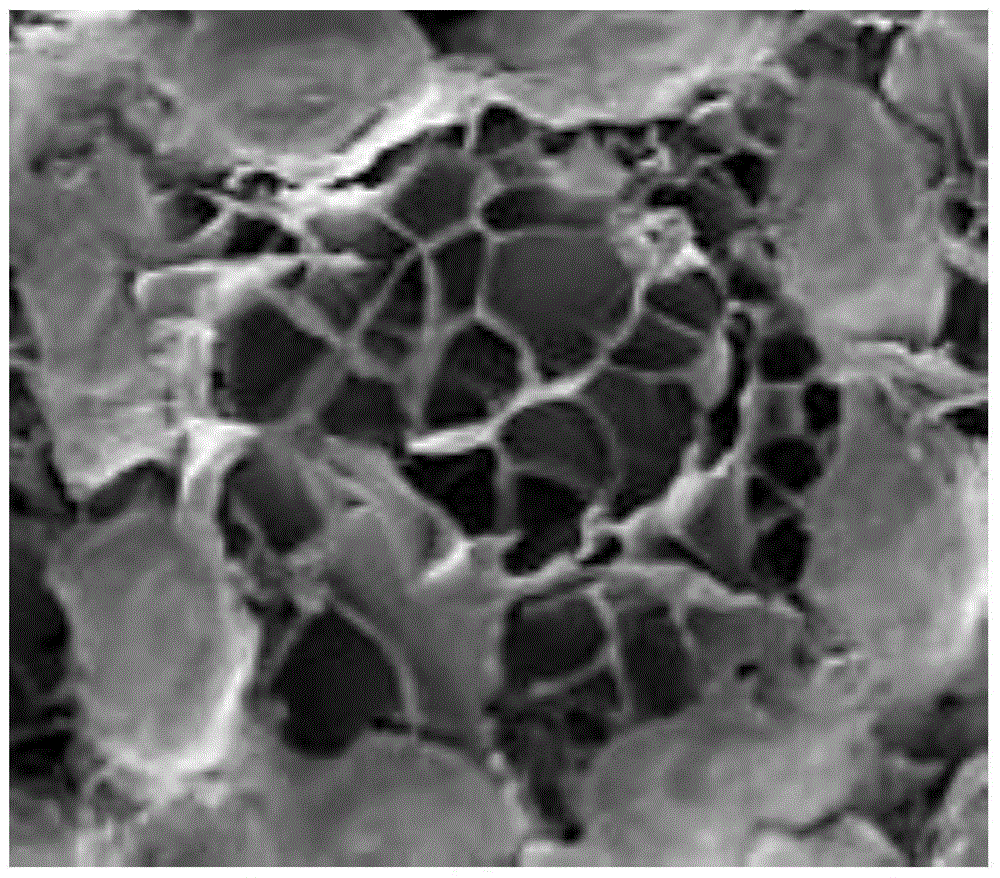A Three-dimensional Microscaffold Composite Porous Metal Scaffold Adhering to Platelets
A porous metal and platelet technology, applied in the field of biomedical materials, can solve the problems of small application range, lack of biological activity, insufficient mechanical strength of biodegradable materials, etc., and achieve the effect of no immune rejection and convenient source.
- Summary
- Abstract
- Description
- Claims
- Application Information
AI Technical Summary
Problems solved by technology
Method used
Image
Examples
Embodiment 1
[0051] Example 1 Preparation of platelet-adhered three-dimensional microscaffold composite porous titanium alloy scaffold
[0052] 1. Preparation of porous titanium alloy scaffold
[0053] (1) Import the CT image into 3D image software such as Mimics or CAD to obtain a 3D image of the target bone tissue. The average pore column is 100 μm and the pore diameter is 300 μm. The image is filled and expanded with regular hexahedral units to obtain a personalized porous connected 3D image. digital model.
[0054] (2) EOS M280 metal material 3D printer was used to print porous titanium alloy scaffolds based on the design model with titanium alloy (Ti-6Al-4V) as the raw material.
[0055] 2. Preparation of gelatin three-dimensional microscaffold composite porous titanium alloy scaffold
[0056] (1) The gelatin particles were soaked in deionized water for 2 hours, and at the same time stirred at 37° C. under the action of a magnetic stirrer at 300 r / min until completely dissolved, wit...
Embodiment 2
[0062] Example 2 Preparation of platelet-adhered three-dimensional microstent composite porous titanium alloy scaffold
[0063] 1. Preparation of porous titanium alloy scaffold
[0064] (1) Import the CT image into three-dimensional image software such as Mimics or CAD to obtain a three-dimensional image of the target bone tissue. The average pore column is 300 μm and the pore diameter is 1000 μm. The image is filled and expanded with regular dodecahedron units to obtain personalized porous Connected 3D digital models.
[0065] (2) EOS M280 metal material 3D printer was used to print porous titanium alloy scaffolds based on the design model with titanium alloy (Ti-6Al-4V) as the raw material.
[0066] 2. Preparation of gelatin three-dimensional microscaffold composite porous titanium alloy scaffold
[0067] (1) The gelatin particles were soaked in deionized water for 2 hours, and at the same time stirred at 37° C. under the action of a magnetic stirrer at 300 r / min until com...
Embodiment 3
[0073] Example 3 Preparation of platelet-adhered three-dimensional microscaffold composite porous titanium alloy scaffold
[0074] 1. Preparation of porous titanium alloy scaffold
[0075] (1) Import the CT image into three-dimensional image software such as Mimics or CAD to obtain a three-dimensional image of the target bone tissue. The average pore column is 300 μm and the pore diameter is 1000 μm. The image is filled and expanded with regular dodecahedron units to obtain personalized porous Connected 3D digital models.
[0076] (2) EOS M280 metal material 3D printer was used to print porous titanium alloy scaffolds based on the design model with titanium alloy (Ti-6Al-4V) as the raw material.
[0077] 2. Preparation of gelatin three-dimensional microscaffold composite porous titanium alloy scaffold
[0078] (1) The gelatin particles were soaked in deionized water for 2 hours, and at the same time stirred at 37° C. under the action of a 300 r / min magnetic stirrer until com...
PUM
| Property | Measurement | Unit |
|---|---|---|
| diameter | aaaaa | aaaaa |
| pore size | aaaaa | aaaaa |
| pore size | aaaaa | aaaaa |
Abstract
Description
Claims
Application Information
 Login to View More
Login to View More - R&D Engineer
- R&D Manager
- IP Professional
- Industry Leading Data Capabilities
- Powerful AI technology
- Patent DNA Extraction
Browse by: Latest US Patents, China's latest patents, Technical Efficacy Thesaurus, Application Domain, Technology Topic, Popular Technical Reports.
© 2024 PatSnap. All rights reserved.Legal|Privacy policy|Modern Slavery Act Transparency Statement|Sitemap|About US| Contact US: help@patsnap.com










